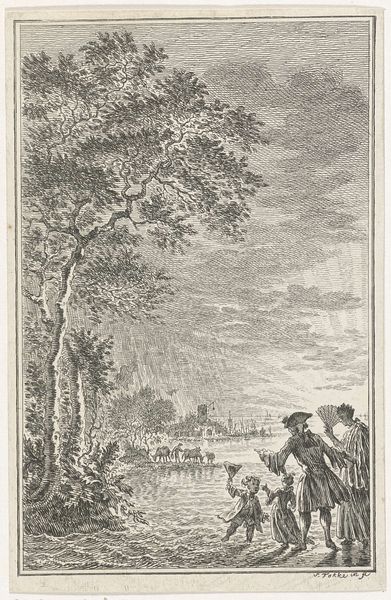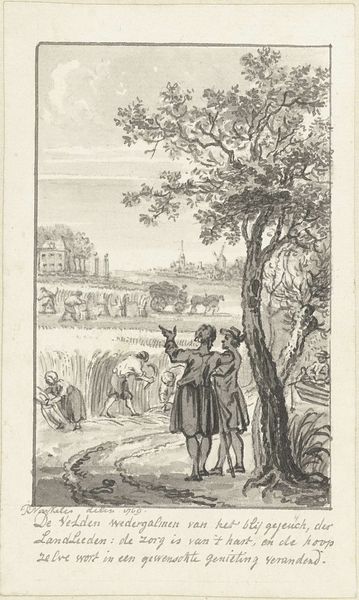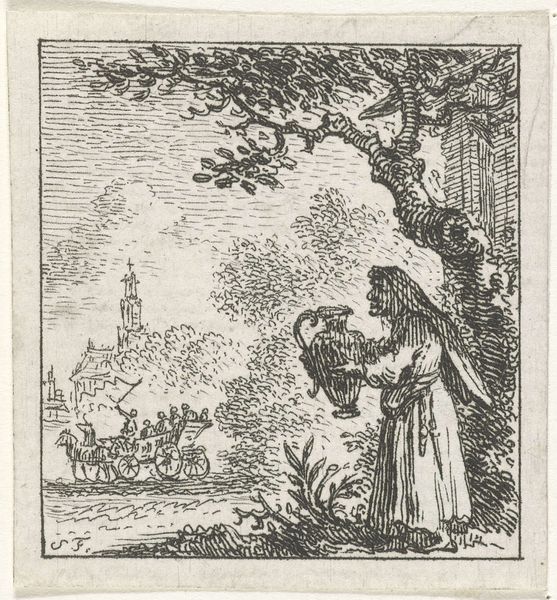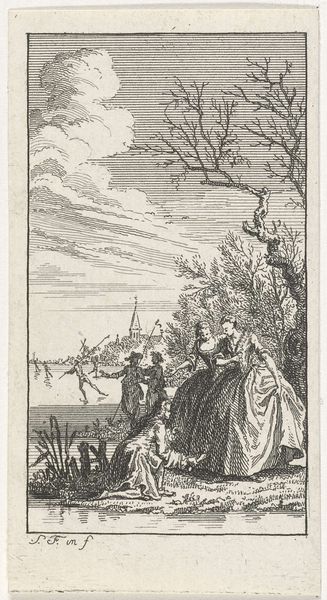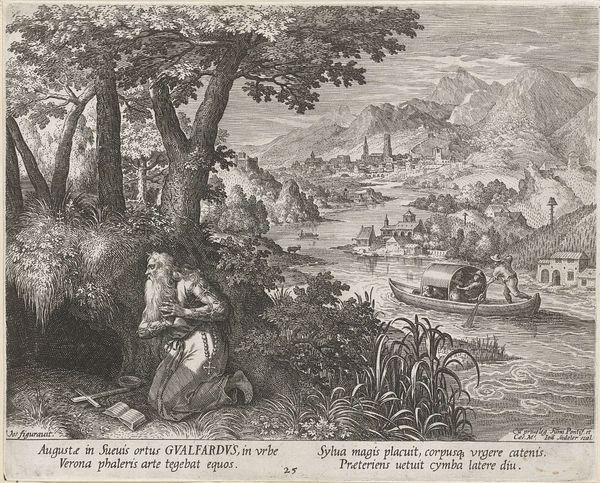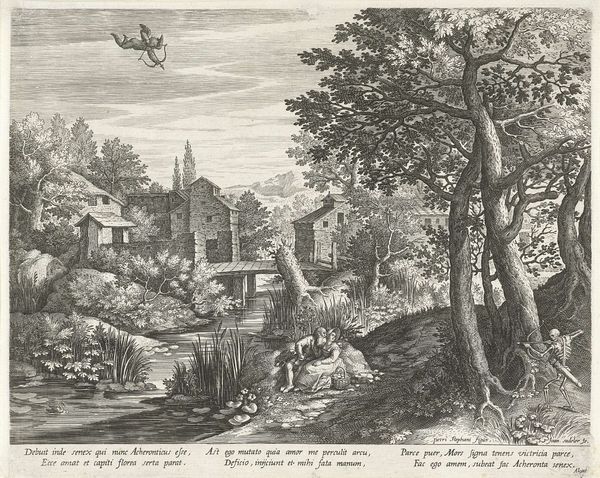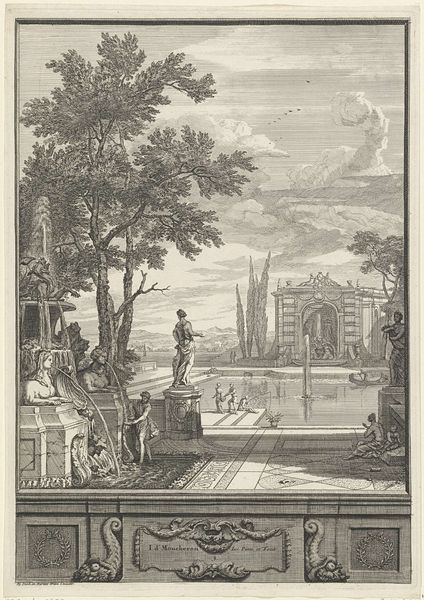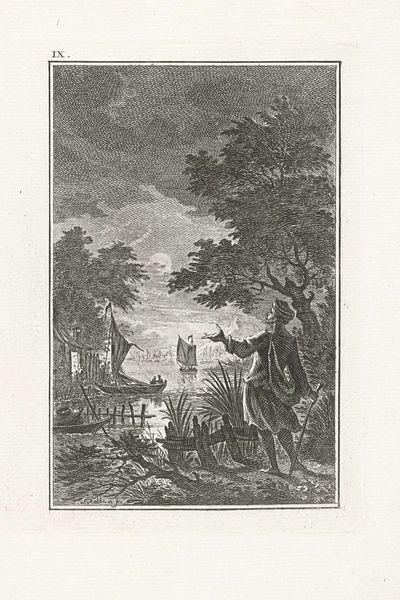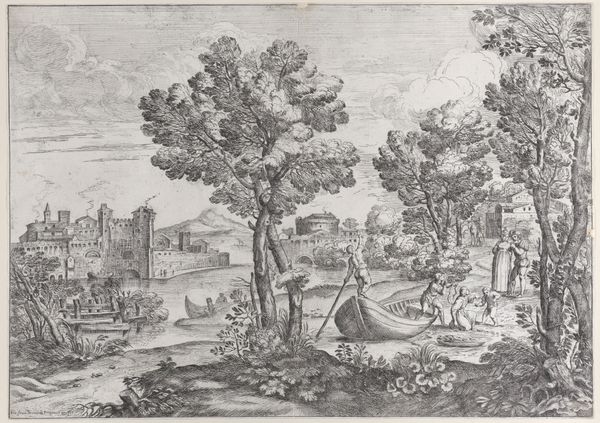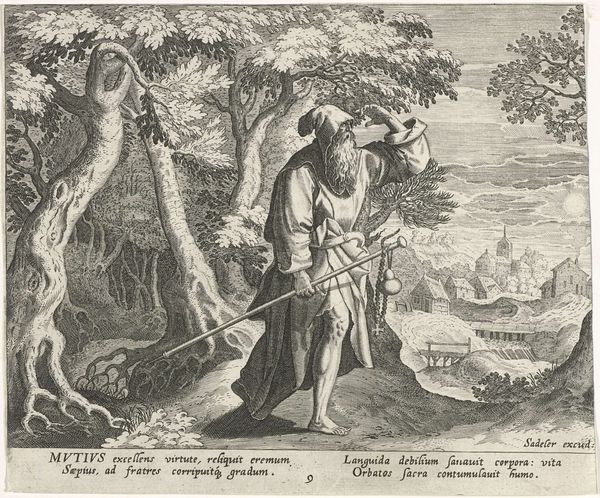
drawing, pen
#
drawing
#
light pencil work
#
pen sketch
#
pencil sketch
#
old engraving style
#
landscape
#
figuration
#
personal sketchbook
#
sketchwork
#
romanticism
#
pen-ink sketch
#
pen work
#
sketchbook drawing
#
pen
#
genre-painting
#
sketchbook art
Dimensions: height 139 mm, width 91 mm
Copyright: Rijks Museum: Open Domain
Editor: This drawing, "Man en vrouw in landschap met zonsondergang," attributed to Johannes Petrus van Horstok and created sometime between 1755 and 1825, captures a tranquil scene using pen and ink. The couple seems to be admiring the landscape at sunset, giving it an idyllic, almost storybook feel. What do you see in this piece? Curator: The sunset, the couple, the landscape itself… It's rife with symbolism. Sunsets often represent endings, but also the promise of a new dawn. The couple, positioned centrally, suggests a harmony between humanity and nature. Even the church spire in the background points towards a spiritual dimension interwoven into this earthly experience. Notice the bridge in the left: How do you think that represents both the landscape and human intervention, maybe even journeys? Editor: It does seem like all of the elements—nature, architecture, people—are meant to complement one another. It’s like a world in balance, though perhaps a bit idealized. Is that something common in romanticism, this idealized perspective? Curator: Precisely! Romanticism often idealizes nature as a space of refuge and spiritual awakening, counterbalancing the rapidly industrializing world. And observe the gesture of the man’s hand. Is he guiding, explaining, possessing, or sharing this world to the woman? That symbolic interaction amplifies this Romantic vision, doesn't it? Editor: It's almost like he is bestowing it onto her, sharing the beauty. I’ve always been fascinated by the period but hadn’t really considered that idyllic perspective as part of a symbolic whole before. Curator: Exactly. Romanticism pulls at cultural memory through these carefully staged compositions. The birds evoke a sense of freedom, and the farmer may imply the changing seasons and landscape over time. Editor: I’ll definitely be thinking about that balance between the natural and human elements going forward, thank you! Curator: My pleasure! Seeing how artists weave layers of symbolism is key to appreciating their place in our own understanding of landscape and shared cultural values.
Comments
No comments
Be the first to comment and join the conversation on the ultimate creative platform.
